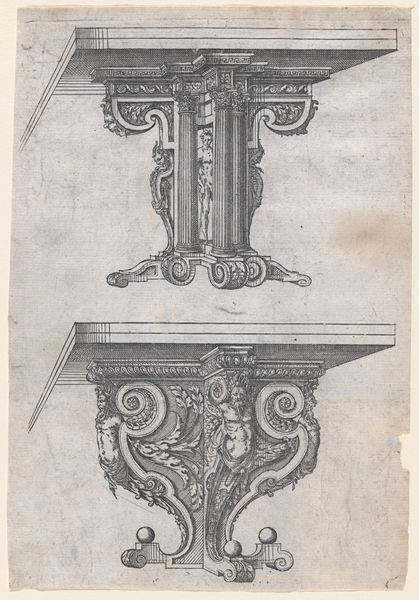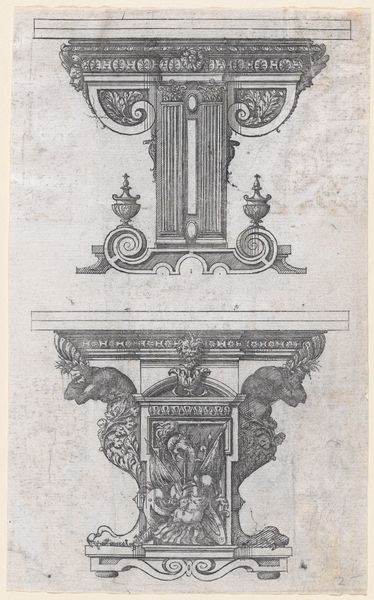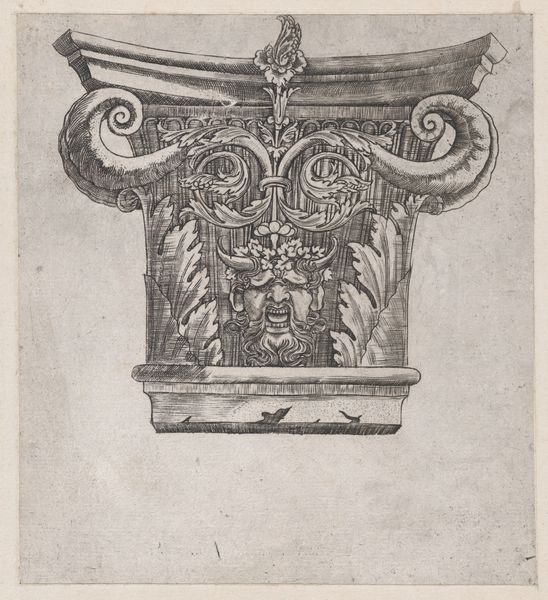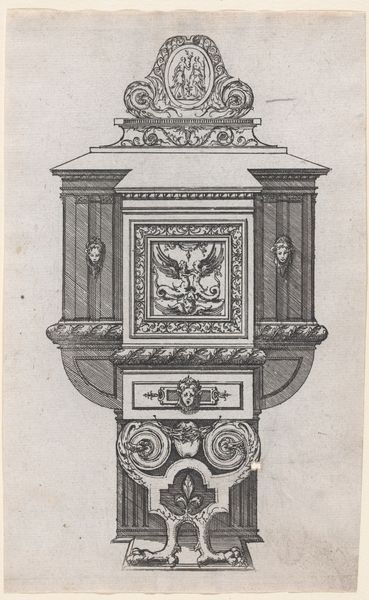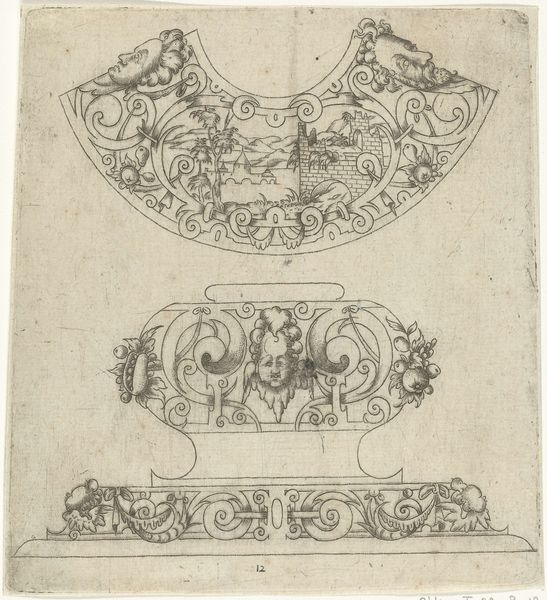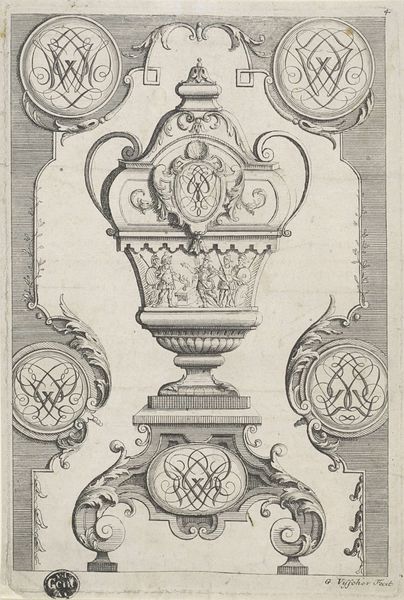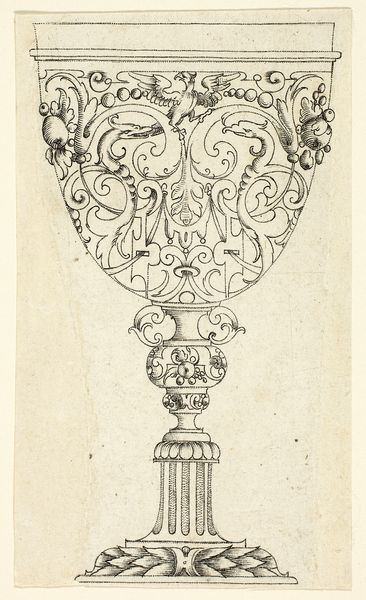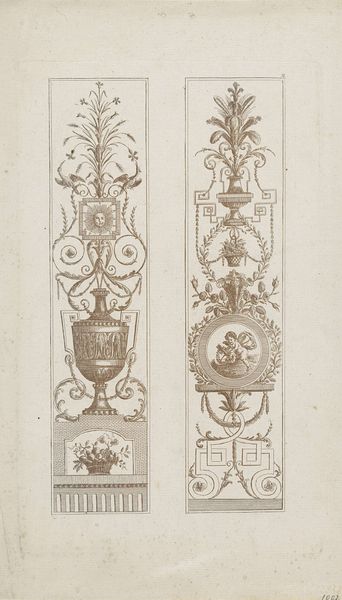
drawing, graphic-art, print, engraving
#
drawing
#
graphic-art
#
pen drawing
# print
#
form
#
11_renaissance
#
geometric
#
line
#
engraving
Dimensions: Sheet: 7 5/16 × 4 1/8 in. (18.5 × 10.4 cm)
Copyright: Public Domain
Curator: This engraving from the late 16th century by Jacques Androuet Du Cerceau presents us with, quite literally, two table designs. Both designs seem to be vying for my attention with their highly decorative and imaginative structures. Editor: I agree. There's a whimsical, almost theatrical quality to them. Look at the extravagant curves and flourishes. The linework is so precise. What kind of tables are we even talking about here? Curator: Well, given Du Cerceau's role as a designer catering to wealthy patrons, it is safe to assume that we are considering high-end furnishings. The designs reflect the aesthetics popular during the French Renaissance, characterized by ornamentation that referenced classical antiquity. These were status symbols as much as functional pieces of furniture. Editor: It’s hard to imagine anyone actually eating at these, or even putting things on top of them. The negative space is such an integral component of the composition itself. These forms seem intended to elevate or monumentalize objects placed on them, even at the expense of actual utility. It’s not about surface area, is it? It’s about visual power. Curator: Exactly! And in a time defined by powerful families seeking to consolidate their position, printed designs served an important role. Engravings like these helped disseminate architectural and design ideas to a wider audience beyond the immediate circle of wealthy patrons, informing and shaping tastes among rising elites, or really, anyone with aspirations of rising. Editor: I find it so impressive how Du Cerceau managed to balance clarity of form with the intensity of detail, even on the lower table with that incredible foliage ornamentation. It manages not to overwhelm, but to delight, and make a potential patron feel in command of culture. Curator: The tables truly serve as microcosms of their era, reflecting an intersection of artistic expression and socio-political ambition. I’m interested in where exactly these designs surfaced as implemented architectural models and how these were translated. Editor: As a piece of art, I’m inspired by the geometry, the patterns and details and how Du Cerceau used them to such aesthetic heights. They still feel surprisingly modern today.
Comments
No comments
Be the first to comment and join the conversation on the ultimate creative platform.
